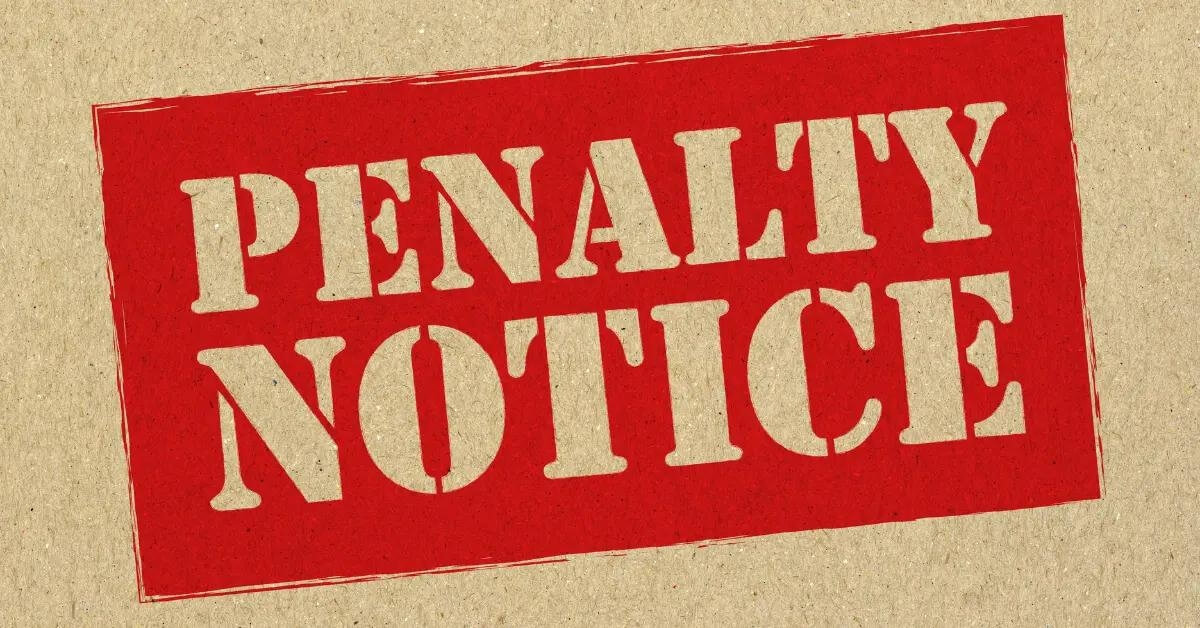It’s that time of year again. Tax season is upon us, and there might be many different forms that you need to understand. This includes IRS Form 5498. (also see our guide on IRS form 5498-SA)
The trustees or administrators of Independent Retirement Accounts (IRAs) must file Form 5498 every year to report the contributions plan holders have made to their IRAs during the tax year. They should submit one copy of this form to the Internal Revenue Service (IRS) and provide an additional copy to the owner of the IRA. This guide explains when you need to complete Form 5498 and outlines the information that needs to be included on it.
As with most tax documents, this one can be a little complicated to navigate. As your trusted tax professionals, we’re here to make it as simple and straightforward as possible. Today, we’re answering the most common questions about this form and sharing everything you need to know.
What Is IRS Form 5498?
The full name of this document is IRA Form 5498: IRA Contributions Information. This is the form that your IRA trustee or IRA custodian will use to report your annual IRA contributions to the IRS.
Taxpayers who have contributed to an IRA during the year will also receive a copy of this form, but they don’t need to include it when they file their tax returns. Taxpayers typically rely on their records to report IRA contributions on their tax returns, as these forms are generally not issued until after the annual deadline to submit individual tax returns.
Note that as an individual taxpayer, you will not need to file this form with the IRS, nor should you include it in your tax return. However, your tax advisor can provide you with a copy of the completed form to keep in your records. Still, your copy is for informational purposes only.
This form covers a range of different types of IRA contracts, including:
- Traditional IRAs
- SEP-IRAs
- SIMPLE IRAs
- Roth IRAs
- Inherited IRAs
- Deemed IRAs
You will receive Form 5498 for each type of IRA account that you contribute to. For instance, if you have both a traditional IRA and a Roth IRA, then you’ll receive separate forms for each contract.
Note that a Deemed IRA is a special type of employee contribution plan, set up as a traditional IRA or a Roth IRA. It’s added to your employer’s qualified retirement plan.
While those are the high-level details, there’s much more to know. Next, let’s take a look at some of the most frequently asked questions about Form 5498.
What Types of Transactions Does It Cover?
Form 5498 is used to report certain changes made to your account during the tax year. This can include the following types of transactions:
- Contributions
- Conversions
- Rollovers
- Recharacterizations
This form will also detail the year-end fair market value of your IRA account. Note that for Inherited IRAs, Form 5498 are generated on behalf of the deceased, as well as any beneficiaries.
In terms of recharacterizations, keep in mind that as of January 1, 2018, the Tax Cuts and Jobs Act prohibits you from recharacterizing a rollover or conversion to a Roth IRA. However, you can recharacterize a contribution that you’ve made to one type of IRA to another type. If you wish to do so, then contact your IRA trustee and instruct them to transfer your contribution amount, including any earnings, to the different contract type.
What Types of Retirement Plans Are Not Included in the Form?
While the all of the account types above will fall into the Form 5498 category, it is not all-inclusive. Rather, there are certain types of qualified retirement plans that do not require the issuance of this document.
These include:
- 403(b) plans
- 401(k) plans
- Pension plans
In addition, there are also other types of non-qualified retirement plans that will also not necessitate Form 5498. If you made contributions to a Health Savings Accounts (HSA), Archer Medical Savings Accounts (MSA), or Medicare Advantage (MA) MSA, then you may receive Form 5498-SA instead.
When Is the Form Due to the IRS?
Form 5498 is required to be filed and furnished to the IRS no later than May 31 of each year that follows the tax reporting period. This is the case regardless of whether the forms are filed on paper or e-filed.
Why the later date? Put simply, taxpayers can make carryback contributions to their IRA accounts up until the tax filing date of the following year. To allow time for these calculations, the due date is later than the traditional tax return deadline.
In 2021, the IRS extended this deadline to June 30. However, that does not appear to be the case for 2022.
Plan administrators should use Form 5498 to report contributions to traditional, ROTH, Simplified Employee Pension (SEP) IRAs, and Savings Incentive Match Plan for Employees (SIMPLE) IRAs. They don’t have to file this form, however, if the plan holder didn’t make any contributions or take any distributions during the year. Here are the basic guidelines for when you need to use this form:
You Should File Form 5498 for Each IRA Holder
You should file Form 5498 for each person who has an IRA in your custody. You don’t need a separate form for each asset in their IRA – for instance, if someone has three certificates of deposit in their IRA, you still should only file one Form 5498. You only need to file multiple forms if a single person has multiple IRA accounts.
You Must Report Recharacterizations
A recharacterization is when an account holder transfers a contribution from one IRA to another type of IRA. The custodian of the first IRA must file Form 5498 to report the original contribution, and then they can use a 1099-R to report the distribution. The custodian of the second IRA, in turn, should report the recharacterized amount as a contribution on the Form 5498 that they generate.
You Don’t Have to Report Trustee-to-Trustee Transfers
Transfers made between IRA accounts typically don’t have to be reported on Form 5498. This includes transfers made between the following accounts:
- Traditional IRA or SEP to another traditional IRA or SEP
- Traditional IRA or SEP to a SIMPLE IRA after the first two years of plan participation
- SIMPLE IRA to SIMPLE IRA
- SIMPLE IRA to traditional IRA or SEP IRA after the first two years of plan participation
- Roth IRA to Roth IRA
Any rollovers to a closed or revoked account must be reported on Form 5498, regardless of whether the IRAs fall into the above categories.
You Often Need to File 2 Form 5498s With Inherited IRAs
You need to file Form 5498 on behalf of the account holder if they die during the year. You should also file the form for every non-spouse beneficiary.Plan custodians must distribute Form 5498 by May 31st of the year following the year the contributions were made, but for tax year 2021, the IRS has extended the deadline to the end of June. This allows the custodian to include any contributions made during the beginning of the tax year that were included on the previous year’s tax return.
Will I Receive Form 5498?
Only taxpapers who hold one of the IRA contract types listed above and have made at least one applicable transaction (also listed) will receive an IRS Form 5498.
If you meet only one of these conditions but not the other, then you will not receive the form. For instance, if you hold a Traditional IRA but did not make any contributions, rollovers, conversions, or recharacterizations to it in the previous tax year, then you should not expect to receive one.
However, the IRS will still receive information on the fair market value of your contract, even if Form 5498 isn’t generated. Note that if you are expecting to receive a copy of this form but it hasn’t arrived, then there could be other issues at work.
For instance, there may be a shipping delay or an error with your mailing information. Contact your trustee to make sure they have your correct mailing information on file. You may also be able to log into your online account and check the status there.
I Have an IRA, so Why Didn’t I Receive Form 5498?
If you have an active IRA, then you might wonder why you didn’t receive a copy of your IRS Form 5498. If this happens, then it’s likely the result of one of three issues:
- You did not make any contributions to your IRA over the tax year
- You do not actually have an IRA contract
- Your trustee or custodian has an incorrect mailing address on file for your contract
If none of these factors apply to you, then contact your trustee to learn more about why you did not receive this tax document.
Are Certain Transfers and Conversions Exempt?
Certain IRA transactions are not tax-reportable. Thus, they will not be grounds to generate Form 5498. This includes IRA-to-IRA direct transfers. However, as mentioned, your trustee will still send information to the IRS dictating the fair market value of your account.
Other activities, such as Roth conversions, will lead to a Form 5498. If you have any questions about whether or not your individual contract transaction falls into that category, then contact your account representative.
Are There Specific Reporting Guidelines for SEP-IRA or SIMPLE IRA Contracts?
Did your employer make a contribution to your SEP-IRA or SIMPLE IRA this year? If so, then your trustee will report those contributions for the calendar year in which they received them. This is the case regardless of what the specific payment instructions noted.
Keep in mind, however, that you can still deduct the IRA portion of the contribution as required. You will simply need to report this transaction on your individual tax return. If you have any questions about how that process works or how to proceed, then contact your local experienced tax attorneys.
Information to Include on Form 5498
Although you are not personally required to input any information into Form 5498, it’s important to know the type of data that you’ll find in the different fields. Form 5498 looks similar to Form W-2, which employers use to report their employees’ earnings. It has a variety of fields for different types of information. The top of the form requires information on the IRA account number, the trustee, and the plan participant. The fields on the bottom of the form seek details on the contributions made during the year. Here is an overview of what to include in each box of Form 5498:
On the left side, you’ll first find contact information about the trustee in charge of overseeing your account. This includes the following information about the company:
- Name
- Address
- Taxpayer Identification Number
Then, you’ll see the same information entered about you, or the person who owns the IRA.
Box 1
In Box 1, you’ll see the grand total for all of your IRA contributions for the previous tax year. This includes contributions for all of your different IRA accounts, if you have more than one.
However, Box 1 does not include any amounts associated with the following types of transactions:
- Rollover contributions (Box 2)
- Roth IRA conversions (Box 3)
- Recharacterized contributions (Box 4)
Box 2
This box shows direct rollovers to traditional IRAs or Roth IRAs as well as qualified rollovers to Roth IRAs. It does not include rollovers from traditional IRAs to SEP, SIMPLE, or Roth IRAs.
Box 3
This space should include the rollovers from traditional, SEP, and SIMPLE IRAs to Roth IRAS. These IRAs are taxed differently, and you can use Form 8606 to calculate the taxable amount.
Box 4
This box shows amounts that were recharacterized during a transfer. It may include transfers from a range of different types of IRAs.
Box 5
Put the fair market value (FMV) of the IRA at the end of the year into this box. You can use the FMV on the day of death if filling out the form for a decedent. In Box 5, you’ll find the total fair market value of your account. If there are life insurance costs calculated in Box 1, then that total is broken out in Box 6.
Box 6
This box includes amounts related to the cost of life insurance. The amount here needs to be subtracted from the amount in box one to calculate the taxpayer’s IRA deduction.
Boxes 7-10
Boxes seven through 10 show the type of IRA and the contributions made to each type, and box 11 indicates if the account holder needs to make a minimum distribution during the following year.
Taxpayers should keep Form 5498 for their records, and they should contact their plan administrators if they see any mistakes. Plan administrators should ensure they understand how and when to use this form, and they should consider reaching out to a tax expert if they have questions.
You’ll see the specific type of IRA account associated with the form in Box 7. From there, the form breaks out the individual amounts contributed to specific accounts, with a field for the following totals:
- SEP IRA contributions (Box 8)
- SIMPLE IRA contributions (Box 9)
- Roth IRA contributions (Box 10)
The type of IRA is indicated by a checkmark in Box 7 of the form.3
Some types of contributions are then specifically broken out: Box 10 for Roth IRAs, Box 8 for SEP IRAs, and Box 9 for SIMPLE IRAs.3 Deemed IRAs are treated as regular IRAs and may be traditional or Roth IRAs.
Boxes 11-12b
Boxes 11-12b specify your RMD data, including your total RMD amount. If you had any postponed or late contributions, then your trustee will specify that amount and timeline in boxes 13a through 13c. Finally, Boxes 14a and 14b are placeholders for repayment information, and Boxes 15a and 15b break out information on the FMV of specified assets.
Why Don’t My Fair Market Values Match Up?
As you review your completed Form 5498, you may notice a discrepancy in the fair market value totals. Usually, the amount listed on the IRS form will be higher than the amount that you see listed on the year-end (December 31) statement from your trustee.
If this is the case, then don’t panic. There’s a good explanation behind the inconsistency. Most of the time, this happens because one of two factors held true for your IRA contract in the previous tax year:
- It experienced a Roth conversion
- You paid required minimum distributions (RMDSs)
In this case, the value reflected on Form 5498 will include your Actuarial Present Value, or APV. This number represents the value of any future benefits associated with your annuity product from a given date onward (in this case, December 31). If you’re using this product to help fund your retirement account, then the APV must either be included in the conversion amount or used to calculate your RMD payments.
Note that RMD payments were waived for 2020, in keeping with Section 2203 of the Coronavirus Aid, Relief, and Economic Security (CARES) Act. However, they were mandated again in 2021. If you were at least 70.5 years old in the previous tax year, then federal law requires that you begin taking minimum distributions from your IRA account in the following calendar year.
How Do Form Corrections Work?
Your trustee cannot make any changes or corrections to a Form 5498 filed for the previous tax year. This is the case even if you make an excessive contribution and subsequently withdraw a portion of money from the account.
If that happens, then the form will reveal the excessive contribution amount to the IRS. The only action allowed will take place in January of the following year. At that time, the company can file IRS Form 1099-R to reflect the withdrawal that occurred.
While that type of issue is transaction-based, you might wonder what will happen if you notice that your trustee coded a portion of File 5498 incorrectly. In that case, then the issue can be corrected for the tax year in question. However, note that this correction will not take place automatically, so you’ll need to contact your trustee to learn the next steps.
One caveat? If you notice a coding error for a previous tax year, then those cannot be corrected in retrospect.
What If I Claim an IRA Deduction That Exceeds the Amount on Form 5498?
If you claim a deduction on your tax return that exceeds the amount listed on Form 5498, then the IRS will likely reach out to you for clarification.
If you receive a certified letter about this discrepancy, then it may require you to take one or more of the following actions:
- Pay additional taxes
- Pay additional interest
- Pay penalties for tax underpayments
These additional payments are designed to offset your excessive deduction. If you believe that you have received this letter by mistake, then you can reach out to the IRS for more information. Or, contact our team at Silver Tax Group for guidance navigating the information!
Expert Tax Advice and Guidance You Can Trust
IRS Form 5498 is just one of many different tax documents that you’ll need to understand closely in the coming months. If you’re unsure how to proceed or what the information means, then we’re happy to walk you through it.
Our team of qualified tax attorneys is well-versed in every aspect of tax law, and we’ll break everything down so there’s no confusion. When you’re ready to get started, feel free to contact us to discuss your tax-related questions.








